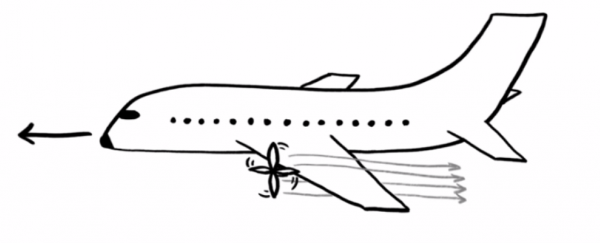It's not very often we stop to think about how freaking amazing it is that we can fly all around the world in a colossal hunk of metal about 10 kilometres above Earth's surface and, statistically, it's a lot safer than driving a car. You know, on land. Sometimes we all just need to watch this "Everything is amazing and no one is happy" clip by Louis CK and remember that yes, being able to fly in an aeroplane is nothing short of a technological marvel and we should all be holding our seats in unbridled awe every time we take off.
But about that technological marvel - what exactly is the science behind it? The latest episode of MinutePhysics gets right down to it, and says the most important thing to remember when thinking through the physics of flight is that there's no net force applied to an aeroplane. "And with no net force, an object at rest stays at rest," says Henry.
Not that there aren't any forces at all acting on the plane - there's gravity for one, all the heavy people onboard for two, and even the air molecules that are being funnelled through the fuselage or colliding with the wings are exerting some force onto it. But as long as these forces are counter-acted, and in this case, they have to be counteracted by forced moving upwards, then the plane will stay where it is.
So what are these upwards forces that can counteract gravity and hundreds of heavy people? According to MinutePhysics, it's all above getting the air molecules surrounding the plane to push up. And trust me, wrangling billions of invisible particles to all do what you want them to do is no small feat.
Watch the video above to see Henry explain the amazing physics behind planes, and remember to grab your seat in awe next time you fly. Because how cool is using physics to make our lives better?
Source: MinutePhysics
